Advertisement
Advertisement
Advertisement
Advertisement
Vascular surgery is the specialized field of medicine that focuses on the surgical management of the pathologies of the peripheral circulation Circulation The movement of the blood as it is pumped through the cardiovascular system. ABCDE Assessment. The main goal of most vascular procedures is to restore circulatory function to the affected vessels by relieving occlusions or by redirecting blood flow Blood flow Blood flow refers to the movement of a certain volume of blood through the vasculature over a given unit of time (e.g., mL per minute). Vascular Resistance, Flow, and Mean Arterial Pressure (e.g., bypass). Surgical intervention is either open or endovascular. Vascular interventions require a multidisciplinary approach, including vascular surgeons, interventional radiologists, anesthesiologists Anesthesiologists Physicians specializing in anesthesiology. Anesthesiology: History and Basic Concepts (or anesthetists), nurses, physiotherapists, and occupational therapists.
Last updated: Jan 17, 2024
Advertisement
Advertisement
Advertisement
Advertisement
Advertisement
Advertisement
Advertisement
Advertisement
An AV fistula Fistula Abnormal communication most commonly seen between two internal organs, or between an internal organ and the surface of the body. Anal Fistula is a surgically created anastomosis between an artery and a vein. This procedure is commonly performed for individuals with end-stage renal disease who require permanent vascular access for hemodialysis Hemodialysis Procedures which temporarily or permanently remedy insufficient cleansing of body fluids by the kidneys. Crush Syndrome, although it may also be congenital Congenital Chorioretinitis.
Preoperative care Preoperative Care Thorough preoperative care is important for patients scheduled to undergo surgery so that they can have the best possible outcomes after their surgical procedure. The preoperative process begins once the decision has been made to proceed with a surgical procedure. Preoperative Care:
In the OR:
Operative care:
Radiocephalic fistula Fistula Abnormal communication most commonly seen between two internal organs, or between an internal organ and the surface of the body. Anal Fistula (Brescia-Cimino fistula Fistula Abnormal communication most commonly seen between two internal organs, or between an internal organ and the surface of the body. Anal Fistula):
Brachiocephalic fistula Fistula Abnormal communication most commonly seen between two internal organs, or between an internal organ and the surface of the body. Anal Fistula (Kaufmann fistula Fistula Abnormal communication most commonly seen between two internal organs, or between an internal organ and the surface of the body. Anal Fistula):
Transposed brachiobasilic fistula Fistula Abnormal communication most commonly seen between two internal organs, or between an internal organ and the surface of the body. Anal Fistula (2-stage approach):
Final steps:
Postoperative care Postoperative care After any procedure performed in the operating room, all patients must undergo close observation at least in the recovery room. After larger procedures and for patients who require hospitalization, observation must continue on the surgical ward. The primary intent of this practice is the early detection of postoperative complications. Postoperative Care:
Observation in the recovery room Recovery room Hospital unit providing continuous monitoring of the patient following anesthesia. Postoperative Care for 6 hours if necessary, or moved directly to the wards, according to each individual case.
Fistula Fistula Abnormal communication most commonly seen between two internal organs, or between an internal organ and the surface of the body. Anal Fistula maintenance:
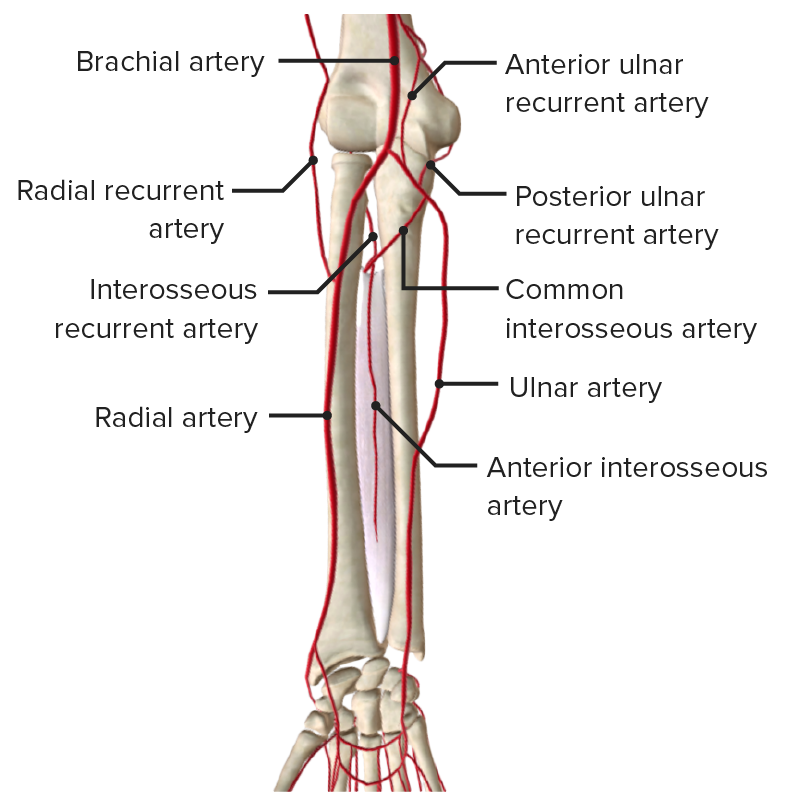
Arteries of the forearm
Image by BioDigital, edited by Lecturio.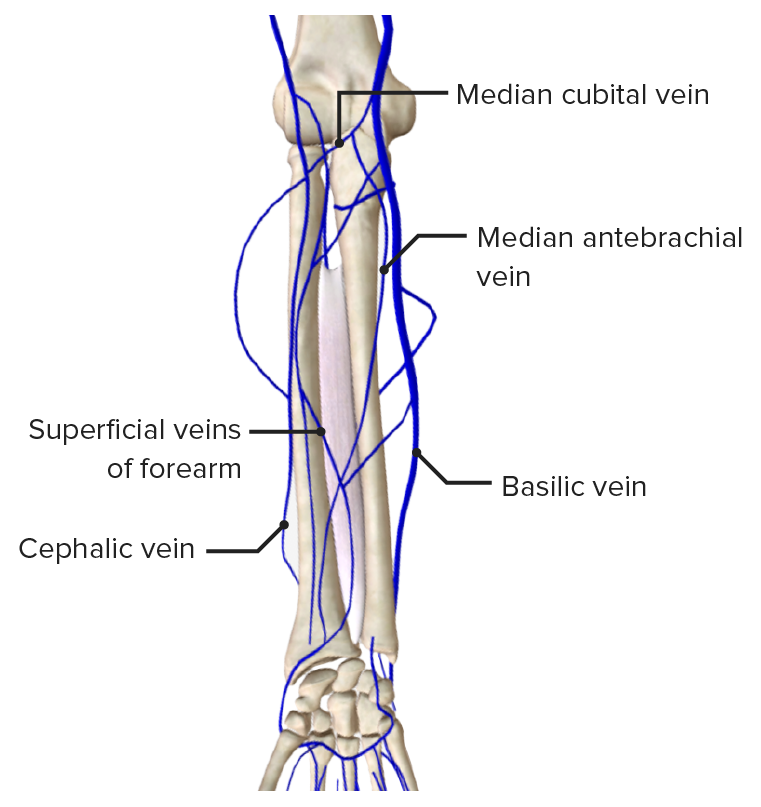
Superficial veins of the forearm
Image by BioDigital, edited by Lecturio.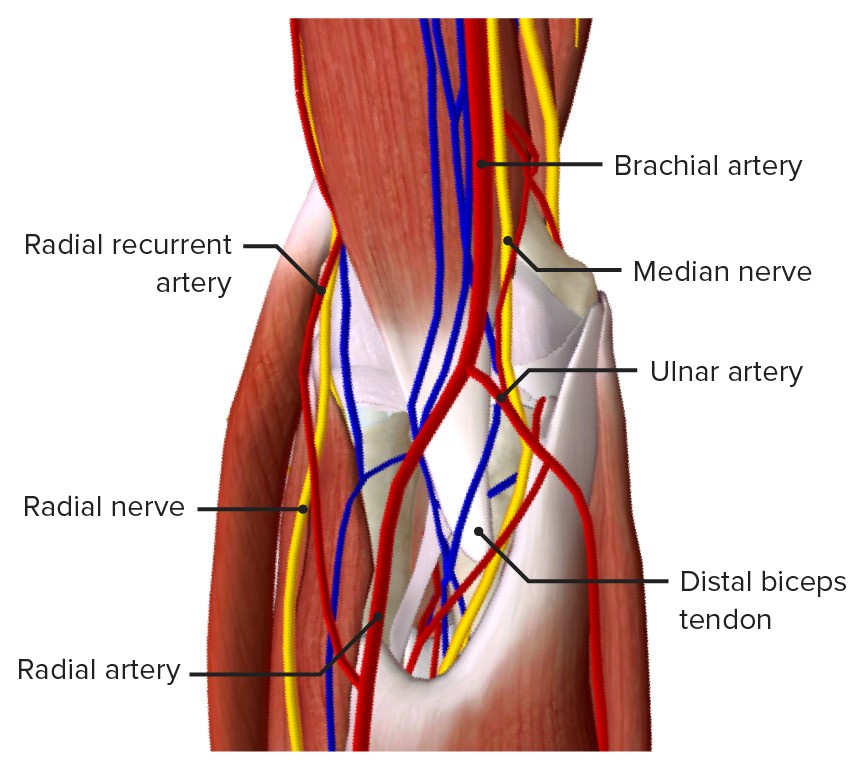
Deep view of the cubital fossa
Image by BioDigital, edited by Lecturio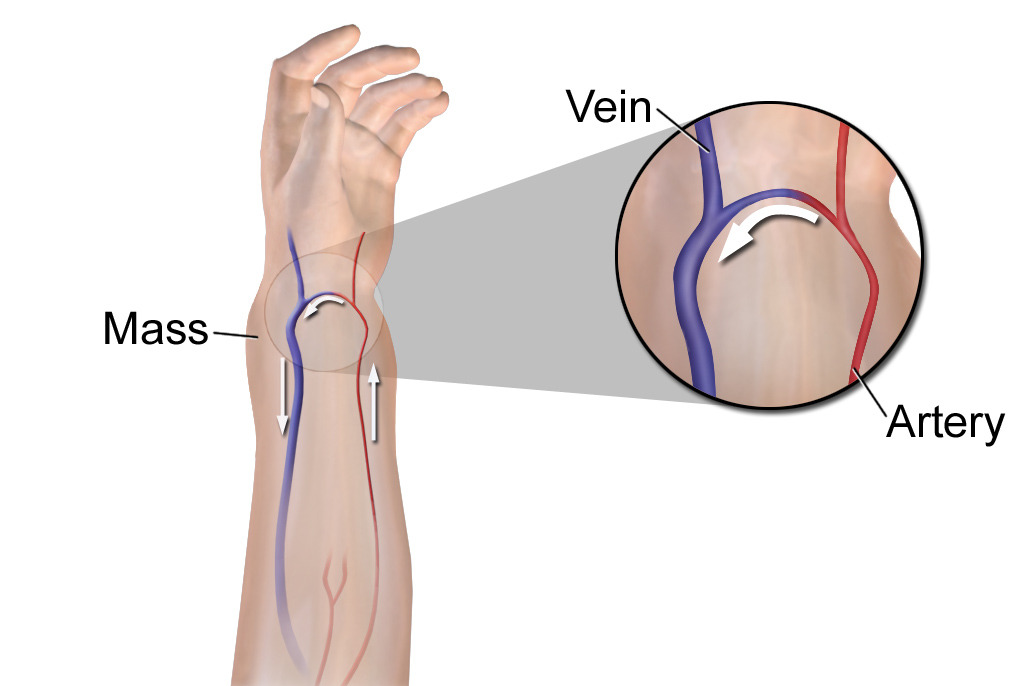
Arteriovenous fistula
Image: “Blausen 0049 ArteriovenousFistula” by BruceBlaus. License: CC BY 3.0Thrombectomy is an interventional procedure by which a blood clot or thrombus is surgically removed from a vessel via endovascular devices under imaging guidance.
Preoperative care Preoperative Care Thorough preoperative care is important for patients scheduled to undergo surgery so that they can have the best possible outcomes after their surgical procedure. The preoperative process begins once the decision has been made to proceed with a surgical procedure. Preoperative Care:
In the OR:
Operative care:
There are several thrombectomy techniques. The following uses a balloon catheter and stent for thrombus removal.
Final steps:
Postoperative care Postoperative care After any procedure performed in the operating room, all patients must undergo close observation at least in the recovery room. After larger procedures and for patients who require hospitalization, observation must continue on the surgical ward. The primary intent of this practice is the early detection of postoperative complications. Postoperative Care:
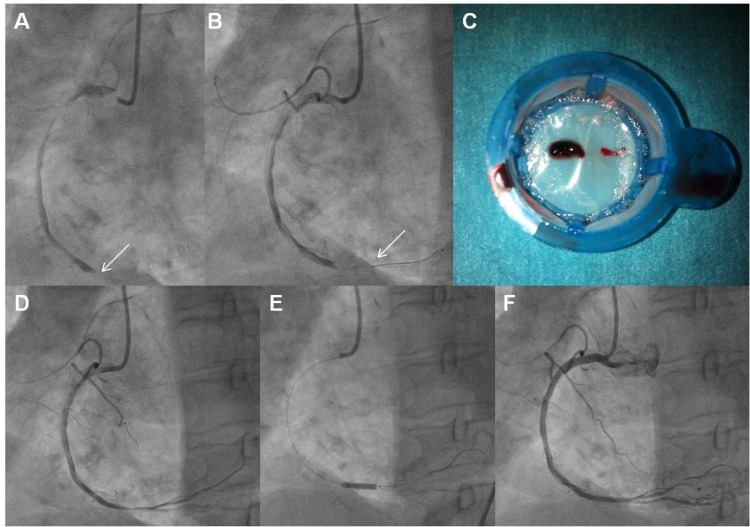
Extraction of thrombus
Image: “CCR-8-202_F2” by Dimitrios Alexopoulos* and Periklis A Davlouros. License: CC BY 2.5A PAB (also known as a peripheral vascular bypass) is a surgical procedure that uses a graft Graft A piece of living tissue that is surgically transplanted Organ Transplantation to restore perfusion to a segment of the arterial circulation Circulation The movement of the blood as it is pumped through the cardiovascular system. ABCDE Assessment distal to an occlusion. This procedure can be performed in potentially any segment of circulation Circulation The movement of the blood as it is pumped through the cardiovascular system. ABCDE Assessment.
Preoperative care Preoperative Care Thorough preoperative care is important for patients scheduled to undergo surgery so that they can have the best possible outcomes after their surgical procedure. The preoperative process begins once the decision has been made to proceed with a surgical procedure. Preoperative Care:
In the OR:
Operative care:
The procedure itself will vary widely depending on the surgical anatomy and location of the obstruction. However, the underlying principle of PAB is establishing proximal and distal anastomoses in disease-free segments. Some examples of PAB include:
Grafts are created with organic (e.g., harvested saphenous vein) or artificial (e.g., polytetrafluoroethylene) materials.
Final steps:
Postoperative care Postoperative care After any procedure performed in the operating room, all patients must undergo close observation at least in the recovery room. After larger procedures and for patients who require hospitalization, observation must continue on the surgical ward. The primary intent of this practice is the early detection of postoperative complications. Postoperative Care:

Example of a bypass graft
Image by Lecturio.A CEA CEA A glycoprotein that is secreted into the luminal surface of the epithelia in the gastrointestinal tract. It is found in the feces and pancreaticobiliary secretions and is used to monitor the response to colon cancer treatment. Serum Tumor Markers is a surgical procedure in which atherosclerotic plaque Plaque Primary Skin Lesions is manually removed from the common and/or internal carotid artery Internal carotid artery Branch of the common carotid artery which supplies the anterior part of the brain, the eye and its appendages, the forehead and nose. Carotid Arterial System: Anatomy. The therapeutic goals are to restore normal blood flow Blood flow Blood flow refers to the movement of a certain volume of blood through the vasculature over a given unit of time (e.g., mL per minute). Vascular Resistance, Flow, and Mean Arterial Pressure and reduce the likelihood of embolization Embolization A method of hemostasis utilizing various agents such as gelfoam, silastic, metal, glass, or plastic pellets, autologous clot, fat, and muscle as emboli. It has been used in the treatment of spinal cord and intracranial arteriovenous malformations, renal arteriovenous fistulas, gastrointestinal bleeding, epistaxis, hypersplenism, certain highly vascular tumors, traumatic rupture of blood vessels, and control of operative hemorrhage. Gastrointestinal Bleeding.
Preoperative care Preoperative Care Thorough preoperative care is important for patients scheduled to undergo surgery so that they can have the best possible outcomes after their surgical procedure. The preoperative process begins once the decision has been made to proceed with a surgical procedure. Preoperative Care:
In the OR:
Operative care:
Final steps:
Postoperative care Postoperative care After any procedure performed in the operating room, all patients must undergo close observation at least in the recovery room. After larger procedures and for patients who require hospitalization, observation must continue on the surgical ward. The primary intent of this practice is the early detection of postoperative complications. Postoperative Care:
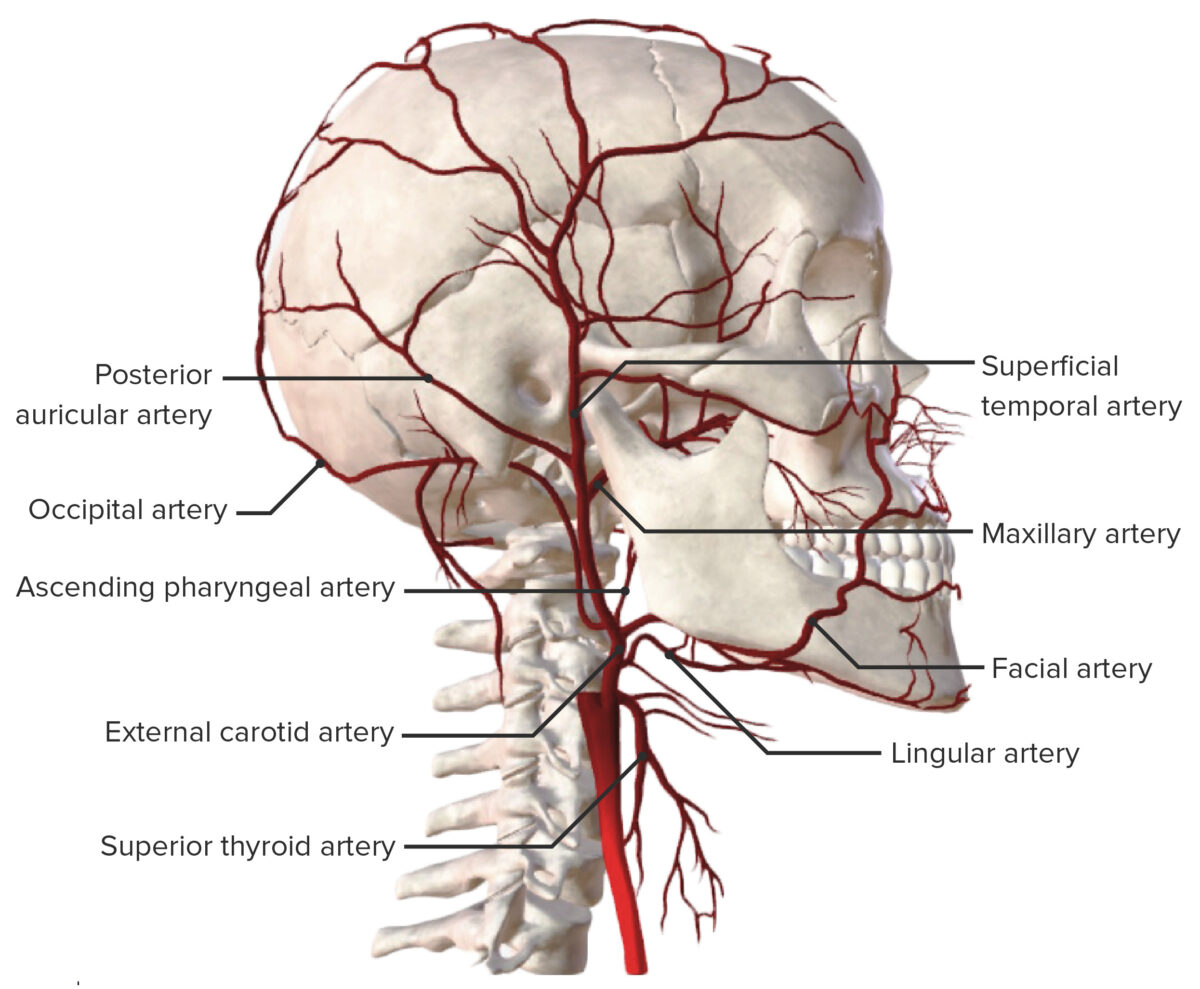
Major branches of the external carotid artery
Image by BioDigital, edited by Lecturio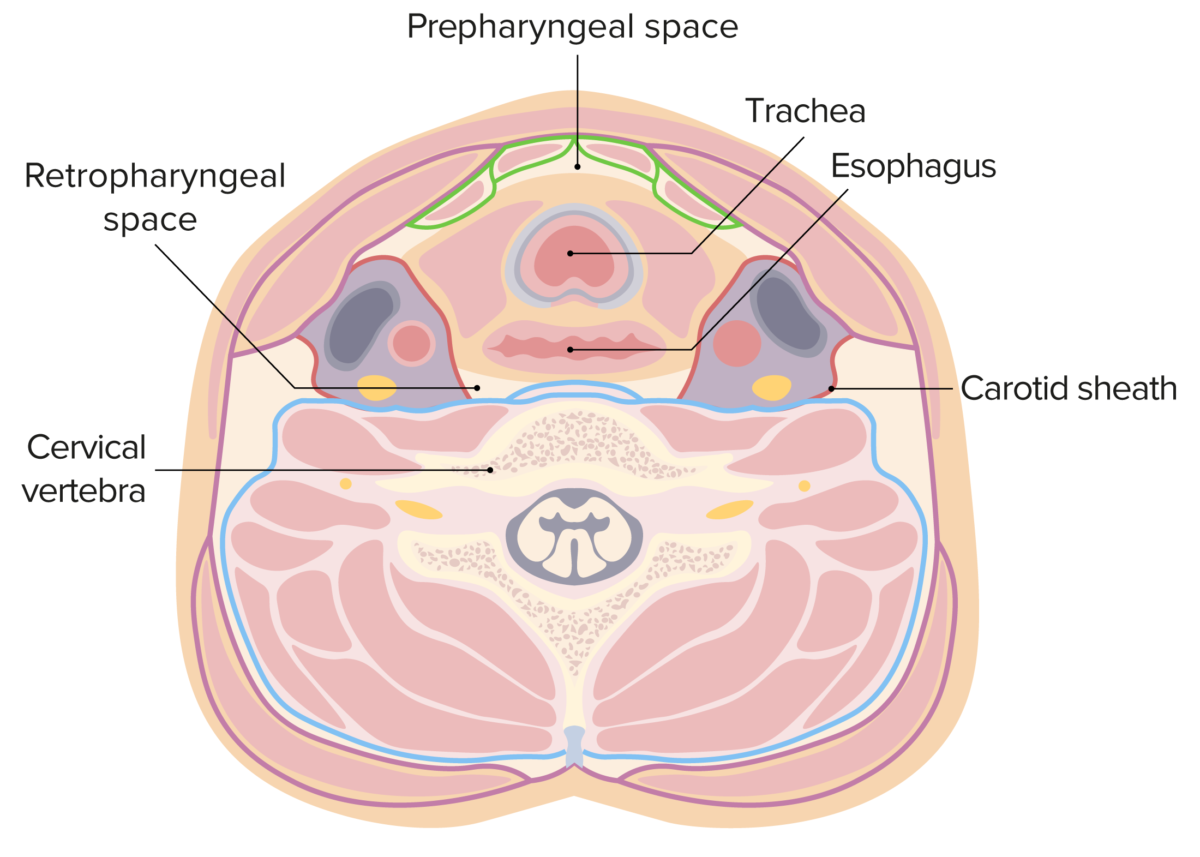
Cross section of the structures of the neck. Note the location of the carotid sheaths deep to the platysma and sternocleidomastoid muscles, as well as the orientation of the contents within the carotid sheath.
Image by Lecturio.